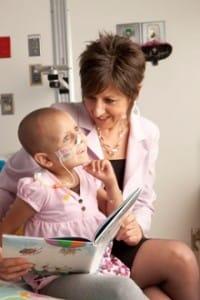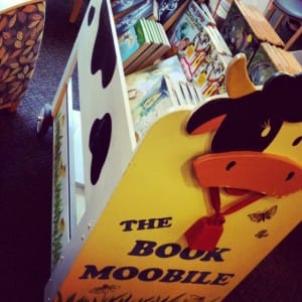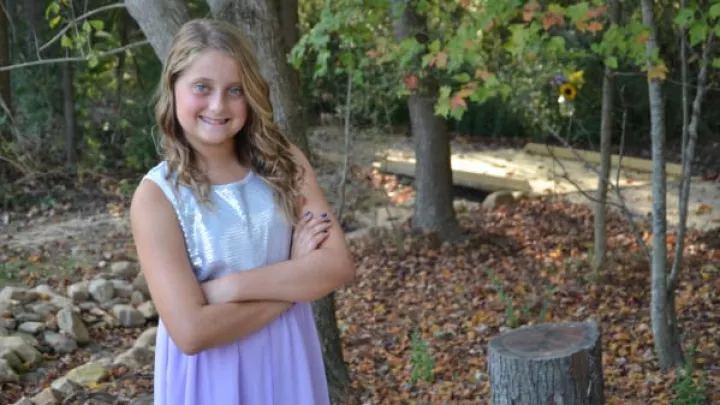
How Books Can Help Healing
Being a nurse has given me the opportunity to experience many things, from taking care of children, helping parents, collaborating with other nurses and working where I can learn something new every day. I’d like to share a story about one of our patients, Joanna* and how she experienced the healing power of books.
Benefits of the Literally Healing Program

Joanna was admitted to Children’s Hospital Los Angeles to treat her physical trauma from a recent car accident. During that same accident, Joanna also suffered severe emotional pain. She was about 10 years old, afraid and not speaking to anyone about the accident because of what she had been through. At Children’s Hospital Los Angeles, we have a program called the Literally Healing Program which provides unique services to our patients and families. Our Literally Healing Program was founded in 2000 by Claire Austin, MPhil. Claire continues to expand the program, which now serves both outpatient and inpatient families. Claire was asked to meet with those taking care of Joanna and to provide a specialized plan involving books chosen just for her.
Claire picked the perfect books for Joanna’s particular situation. Those taking care of Joanna began reading to her daily from the books Claire chose from our therapeutic library. The Literally Healing Program has over 1,000 titles in its therapeutic library. After a few days, Joanna started to open up about her fears and troubles. Then, after a few more days of reading, she felt able to talk to her family about what was troubling her. Through these books, she learned that it was okay to communicate her feelings. Talking things out gave her hope, lessened her fears and then Joanna began feeling happy again. Joanna was now able to participate in some other services provided by the Literally Healing Program.
- It gives children courage to face tough situations.
- It helps children handle their fears.
- It gives children hope for the future.
- It helps distract their minds from the worries of the hospital.
- It gifts books to build literacy and promote academic success.
Other Services the Literally Healing Program Provides to Patients and Families

- A recreational Reading Room staffed by Literally Healing volunteers that provides a quiet reading space and available books for readers of all ages, on many topics. The Reading Room also houses our gifting library of free books for patients and their siblings to select one book each day they are in the hospital.
- Story Time for outpatients, twice per week, in the Saban Story Corner by program volunteers or occasional guest readers.
- Daily bedside reading by program volunteers, for any patient or family who requests it.
- ‘Stories to Grow With', providing an educational reading once a month in partnership with the Family Resource Center, for outpatient and inpatient families. This Story Time has an educational theme followed by a family centered craft activity to reinforce the important lessons.
- A BookMOObile, which is a mobile cart with a cow face and tail, gingham ribbon and cowbell. Program volunteers wheel books from our gifting library around the hospital for children of all ages, from board books for infants to novels for young adults.
From seeing Joanna’s progress through the Literally Healing Program, I have referred many more patients and families to the program and have seen amazing changes in those who participate. I also know of many children who have benefitted from the book gifting program either by picking their own books to read or having parents who picked books to read to their younger children. Here is an example of how a cancer patient finally became inspired to begin chemotherapy treatment after reading one of the therapeutic books from the Literally Healing Program. Last year, with generous donations to the Literally Healing Program, they gifted about 30,000 books to our patients and their siblings. I encourage everyone who can to read for themselves and for parents and older siblings to read to the younger children at least 20 minutes a day to keep up with the national standard.
I found this poem while researching for this blog, that says it all. Read and enjoy!
20 Minutes a Day
Read to your children Twenty minutes a day;
You have the time,
And so do they.
Read while the laundry is in the machine;
Read while dinner cooks;
Tuck a child in the crook of your arm
And reach for the library books.
Hide the remote,
Let the computer games cool,
For one day your child will be off to school;
Remedial? Gifted? You have the choice.
Let them hear their first tales,
In the sound of your voice.
Read in the morning,
Read over noon,
Read by the light of
Goodnight Moon.
Turn the pages together,
Sitting close as you'll fit,
'Till a small voice beside you says,
“Hey, don't quit.” -Author Unknown
* Joanna is not my patient’s actual name. It was changed for this blog post to protect patient privacy. Thank you to Claire Austin for her contributions to this blog


